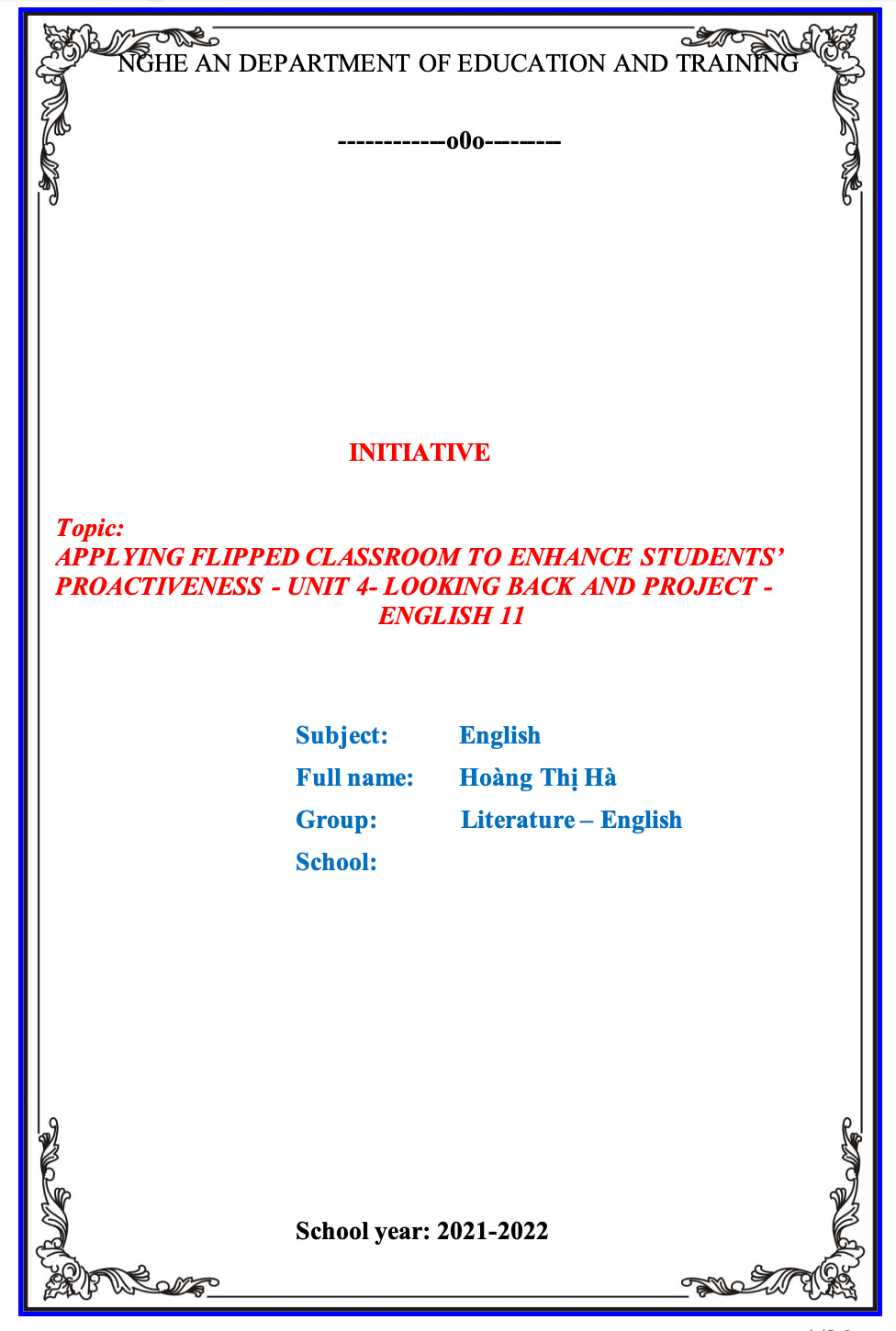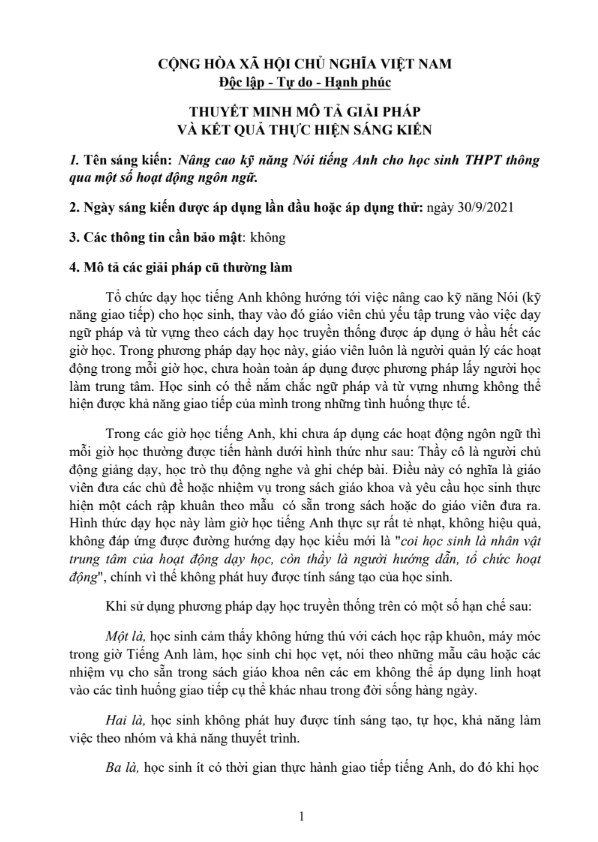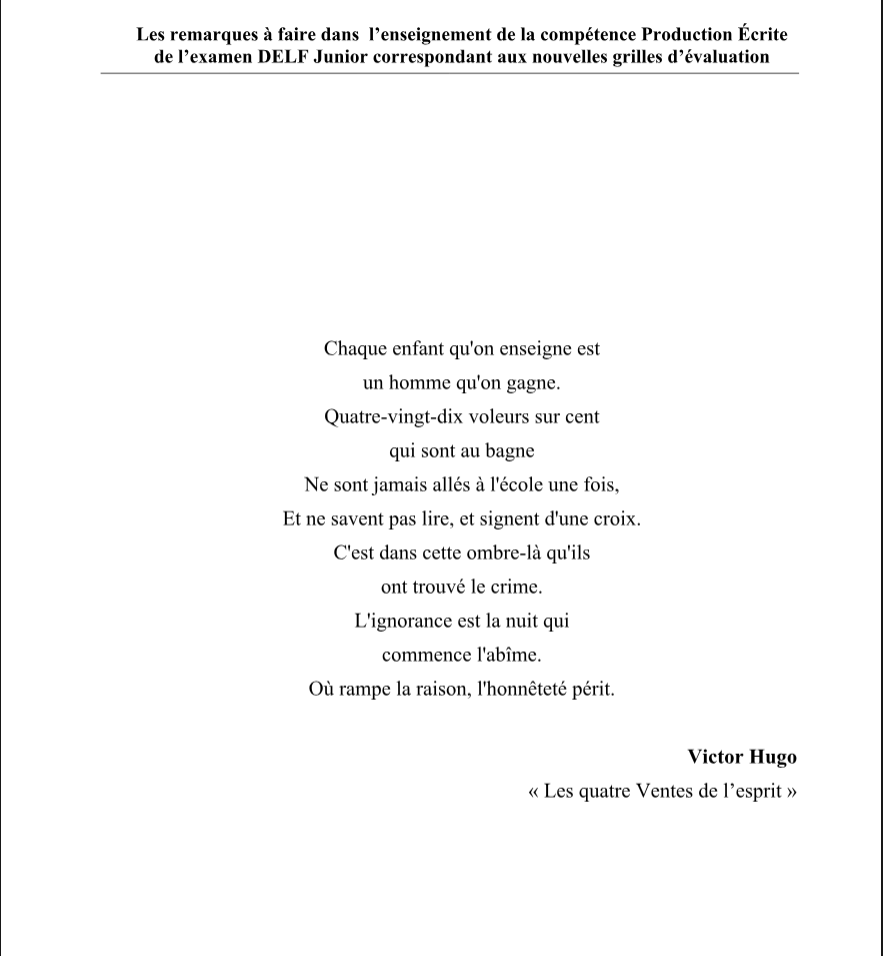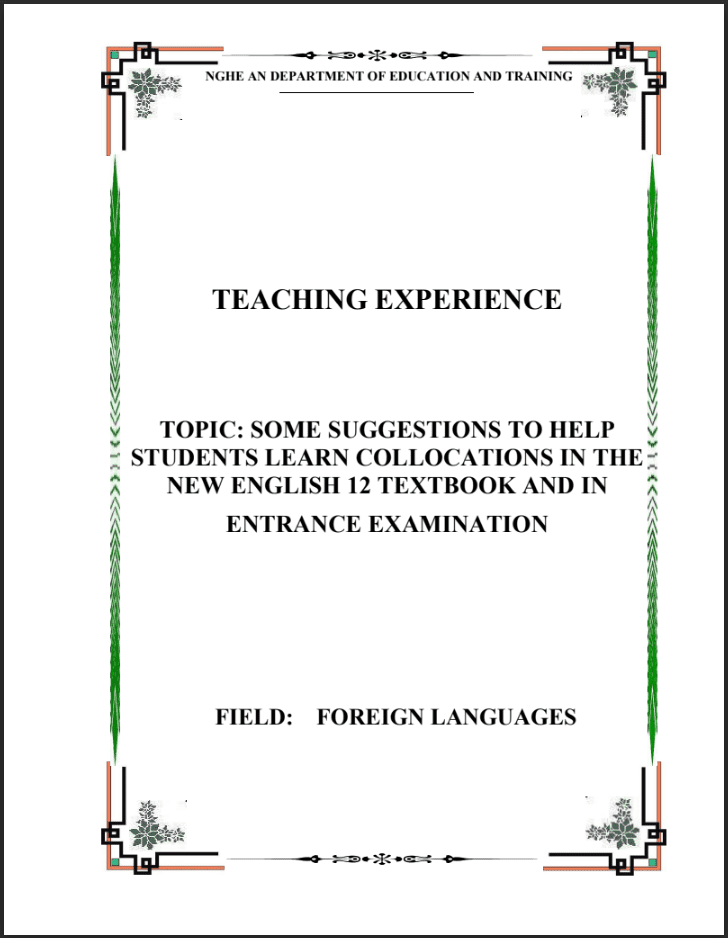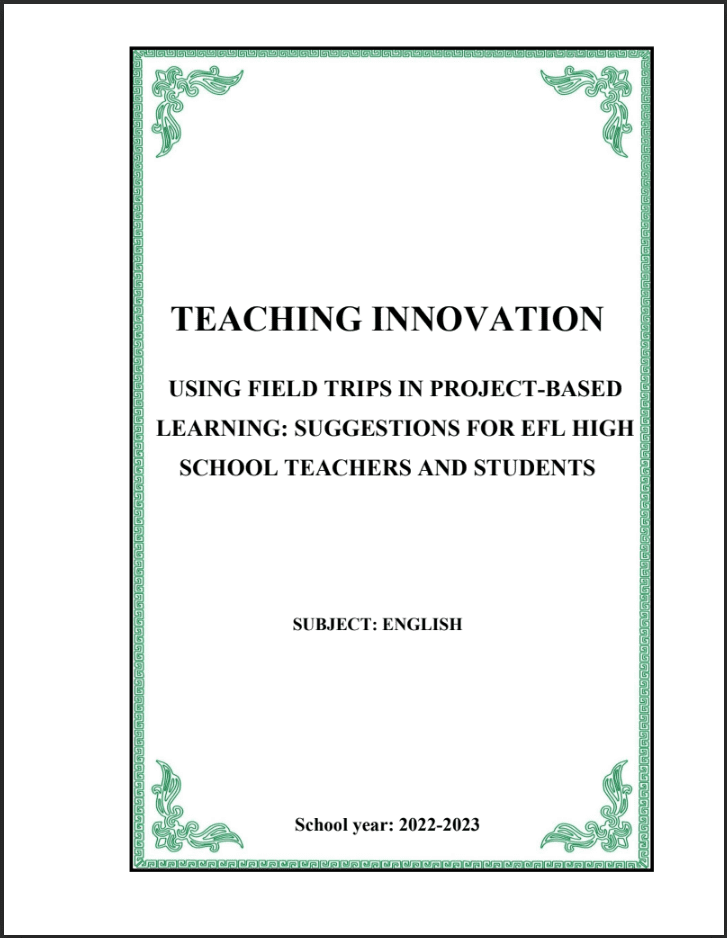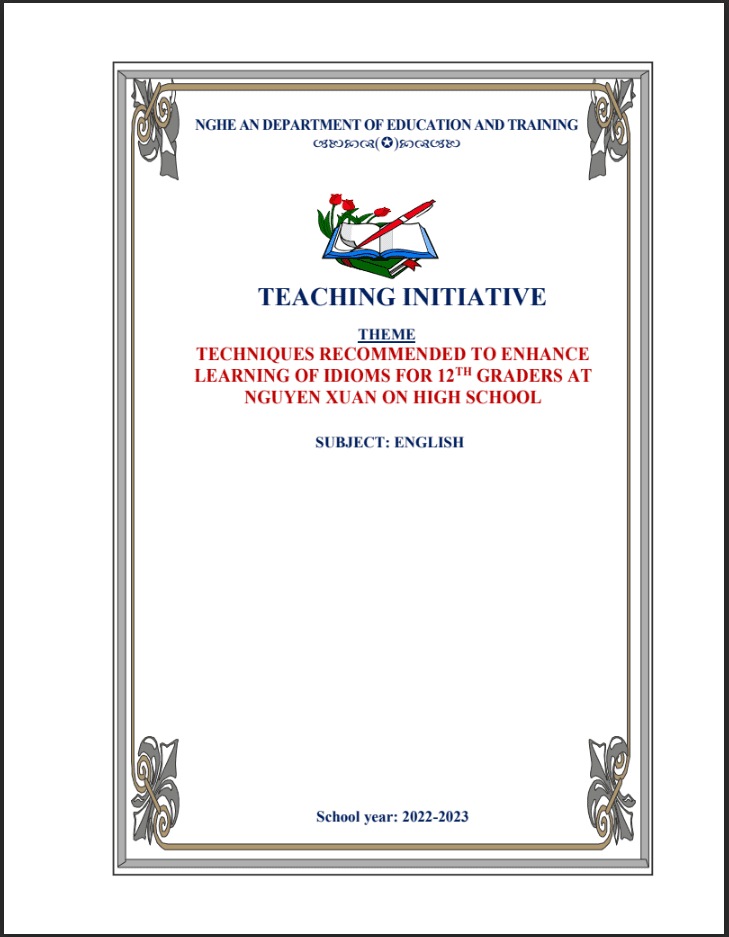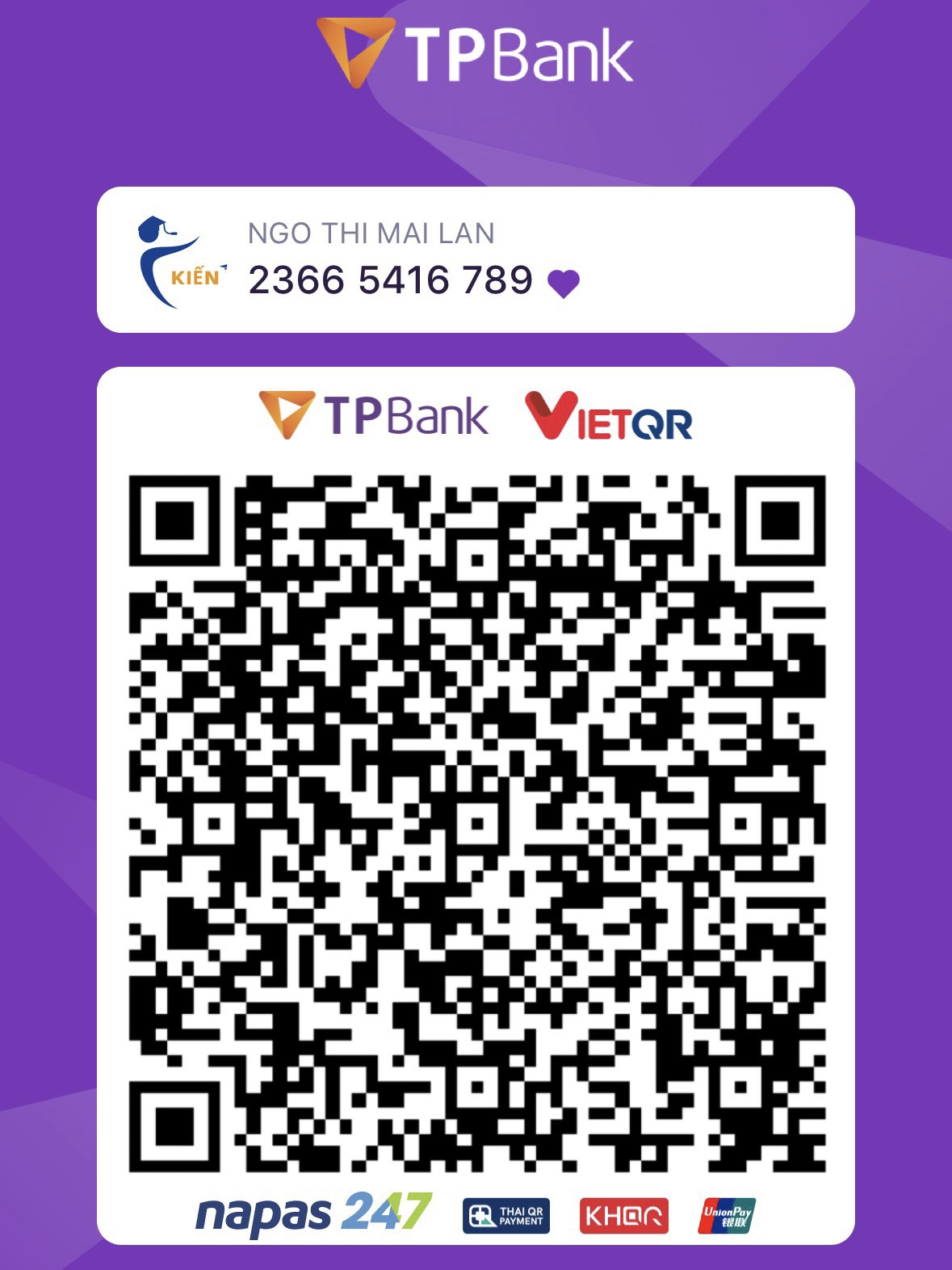SKKN Applying flipped classroom to enhance students’ proactiveness Unit 4 looking back and project English 11
- Mã tài liệu: MP0038 Copy
| Môn: | Tiếng anh |
| Lớp: | 11 |
| Bộ sách: | |
| Lượt xem: | 692 |
| Lượt tải: | 8 |
| Số trang: | 49 |
| Tác giả: | Lê Thị Châu |
| Trình độ chuyên môn: | Thạc sĩ giáo dục |
| Đơn vị công tác: | THPT Con Cuông |
| Năm viết: | 2021-2022 |
| Số trang: | 49 |
| Tác giả: | Lê Thị Châu |
| Trình độ chuyên môn: | Thạc sĩ giáo dục |
| Đơn vị công tác: | THPT Con Cuông |
| Năm viết: | 2021-2022 |
Sáng kiến kinh nghiệm “SKKN Applying flipped classroom to enhance students’ proactiveness Unit 4 looking back and project English 11” triển khai gồm các biện pháp nổi bật sau:
-Analyze the content and objectives of the lesson
– Develop the lesson plan
– Assign learning tasks to students at home
Mô tả sản phẩm
PART I: INTRODUCTION
I.1. Reason for choosing topic “ Flipped classroom”
Innovating teaching methods is one of the important challenges of general education reform as well as reform at the high school level. Goals, programs, new teaching content requires the improvement of teaching methods as well as using the new teaching methods. In recent years, the high school has made great efforts in the innovation of teaching methods and has achieved progress in promoting students’ positive attitude towards learning. However, the traditional teaching methods, especially the presentation method still occupies a leading position in teaching methods in high schools in general, limiting the promotion of positive learning and creativity of the students.
One of the basic orientations of education innovation is to move from an academic, scholastic education, away from reality into an education focused on shaping the capacity to act and promoting the initiative and creativity of learners. Orientation is important for promoting innovative teaching methods for positive learning, self-reliance and creative, action, capacity development and partnerships in the working capacity of learners. It is also the international trend in high school teaching methods reform
Students’ learning power is not equal. Many students cannot keep up with their classmates while some students absorb theory well. Some students prefer to practice. All of these factors lead to the fact that teachers do not have a lot of time to pay attention to each student and quick learners will get bored with passively listening to the teacher.
In the context of the strong 4th technology revolution, teaching combined with the use of information technology to promote learning outside the classroom is an increasingly popular trend.
In the year 2020, there was a profound impact of the COVID – 19 epidemic in the world creating many global complications. The epidemic has affected all aspects of social life, including educational activities in schools
Using the flipped classroom model is an innovative method of teaching. This model has fully exploited the advantages of information technology and helped students learn online during the Covid – 19 epidemic, and contributed to solving the limitations of the traditional teaching model by “reversing” the process. The
“reverse” here is understood as a change in pedagogical intentions and strategies, which is reflected in the way of implementing content, teaching objectives and teaching activities different from the traditional way of teachers.
I.2. Research purposes
Applying the flipped classroom model to teaching English in order to develop cooperative, active, proactive and creative abilities of students. It is hypothesized that this model will contribute to innovating teaching methods and improve the quality of subject teaching and learning, improve learning efficiency, help train and develop thinking as well as skills for learners.
I.3. Research subjects
- Theory of the flipped classroom model
- The process of applying English teaching methods in high schools
-In the scope of this topic, I only study and apply the flipped classroom model in preparing and teaching the progress of class for unit 4 -English 11- Lesson Language and getting started
I.4. Research Methods
Use a combination of the following groups of methods:
I.4. 1. Group of theoretical research methods
Collect, read, analyze and synthesize documents on teaching theory and scientific documents related to the topic.
Using a combination of methods of analysis, assessment, synthesis, systematization, generalization, the study of documents related to the innovation of teaching methods, teaching methods and modern teaching techniques, reverse class model.
Analyze the objectives and structure of the lesson content to apply teaching according to the appropriate and effective flipped classroom model.
I.4.2. Group of practical research methods
+ Observe students’ learning activities, discuss with teachers, attend class time + Investigate the actual situation of applying active teaching methods, teaching methods according to the flipped classroom model in teaching chemistry at high schools in the locality.
+ Experimental pedagogical method, evaluating the effectiveness of using the flipped classroom model in high schools in the area.
PART II: CONTENT OF THE EXPERIENTIAL INITIATIVE
II.1. Theoretical basis of the experiential initiative.
. Overview of the traditional classroom and the flipped classroom.
- Traditional classes:
In the traditional classroom, students go to school to listen to lectures passively and this form is known by experts as Low thinking. Then they go home to do their homework and the process of doing the homework will be difficult if the students don’t understand the lesson. At this time, the parents will have to play the role of reluctant teachers to help their children with homework and most of them are not successful in this role, or it is very difficult because the parents are not professional.
- Flipped classroom:
In the flipped classroom model, students watch lectures at home online, or on tape. Classroom time will be devoted to collaborative activities that reinforce concepts learned. Students will be more active in learning and researching theory, they can access the lesson at any time, can stop the lecture, take notes and review it if needed (this is not possible if listen to the teacher teaching in class).
E-Learning technology provides greater content exposure so that students better understand the theory and are ready to participate in group lessons and advanced exercises at class time. This makes learning more effective, increasing confidence of learners. The flipped classroom makes teaching student-centered. Class time is spent exploring topics in depth and creating interesting learning opportunities. Online educational videos designed to deliver theory-focused content. In addition, the content of the flipped classroom can be built in many different forms (it may even be possible to use the content of an external provider).
Flipped classrooms allow teachers to spend more time with individual students who haven’t fully understood the lesson. And in the classroom, students can actively lead the discussions. This flipped classroom method is highly viable for students with self-directed learning, discipline, and will. With the flipped classroom, learning is guided by the teacher (through pre-prepared textbooks) The student’s task is to self-study and search for information to reinforce the learning. This is a new model and enables students to do low level homework at home. Then in class, the children are organized by teachers to interact and share with each other. High-level exercises are also done in class with the help of teachers and classmates.
This way of learning requires students to use a lot of brain activity, so it is called “High thinking“. Thus, the higher-order tasks in the thinking ladder are performed by both teachers and students. This method does not allow students to sit and listen passively, thus reducing boredom. However, in order for the reverse process to be successful, the E-Learning curriculum must be very methodical and attractive to attract to enable students to focus on learning without distractions. For that reason, this method must be closely tied to the
TÀI LIỆU LIÊN QUAN
- 7
- 105
- 1
- [product_views]
- 5
- 173
- 2
- [product_views]
- 4
- 165
- 3
- [product_views]
- 4
- 129
- 4
- [product_views]
100.000 ₫
- 6
- 434
- 5
- [product_views]
100.000 ₫
- 2
- 507
- 6
- [product_views]
100.000 ₫
- 9
- 546
- 7
- [product_views]
100.000 ₫
- 4
- 409
- 8
- [product_views]
100.000 ₫
- 2
- 595
- 9
- [product_views]
100.000 ₫
- 0
- 538
- 10
- [product_views]

